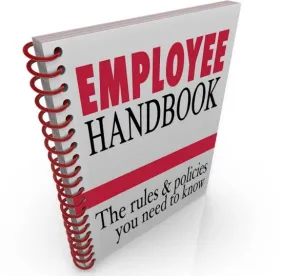The start of the New Year has brought about a flurry of federal administrative agency activity, including guidance from the Department of Labor (DOL) on the joint employer standard to be used for wage and hour matters, as well as proposed guidance from the Equal Employment Opportunity Commission (EEOC) clarifying its position on retaliation under federal employment discrimination laws. Employers should take note of this and other administrative activity that is expected during President Obama’s final year in office, and the impact they may have on day-to-day business operations.
DOL’s Wage & Hour Guidance on the Joint Employer Standard
On January 20, 2016, DOL issued guidance establishing two new standards for finding a joint employment relationship under the Fair Labor Standards Act (FLSA) and Migrant Seasonal Agricultural Worker Protection Act (MSPA)—federal wage and hour statutes that require employers to pay a minimum wage and overtime to employees. The guidance is in response to the continuing trend by businesses to move away from the traditional one employer for one employee model to alternative organizational and staffing models. In order to better address these alternative staffing models, the DOL proposes the following standards: (1) the horizontal joint employment standard, and (2) the vertical joint employment standard:
Horizontal Joint Employment Standard
A horizontal joint employment relationship exists where an employee has employment relationships with two or more employers and the employers are sufficiently associated or related such that they jointly employ the employee. Factors that may suggest a horizontal joint employment relationship include: common ownership, overlapping supervisors, shared control over operations, intermingled business operations, shared supervision of employees, shared employee workforces, shared clients or customers, and the existence of agreements between the potential joint employers. Examples of horizontal joint employment may include restaurants that share economic ties and have the same managers controlling both restaurants, or home health care providers that share staff and have common management.
Vertical Joint Employment Standard
A vertical joint employment relationship exists where an employee has a formal employment relationship with one employer, but the economic realities show that the employee is economically dependent on, and thus, employed by, another entity involved in the work. The most common example of vertical joint employment is the staffing agency model, where individuals employed by an agency perform services for a client of the agency.
Generally, the vertical joint employment analysis focuses on factors such as: whether the potential joint employer directs, controls or supervises the work performed, or controls the working conditions; the degree of permanency and duration of the relationship of the parties; the extent to which work is repetitive, requiring relatively little training; whether the work is integral to the potential joint employer’s business; where the work is performed; and whether the potential joint employer performs employment-related administrative functions.
The consequences of a joint employment finding may be devastating to a business. Joint employers are jointly and severally liable for compliance with the FLSA and/or MPSA, meaning that each joint employer is individually responsible, for example, for the minimum wage and/or overtime violations of a staffing agency, for instance, even though the client may never know about the violation.
Accordingly, companies that might be considered “joint employers”—namely, those employers relying on contracted labor or personnel from staffing agencies or with relationships with affiliated companies in a corporate family—should take heed of the DOL’s guidance and audit their compensation and pay practices.
EEOC Proposed Guidance on Retaliation
On January 21, 2016, the EEOC issued proposed guidance clarifying its position on what constitutes retaliation under federal employment discrimination laws, such as Title VII of the Civil Rights Act of 1964, the Age Discrimination in Employment Act, and the Americans with Disabilities Act. The proposed guidance expands what constitutes retaliation, from the EEOC’s perspective.
For instance, although the proposed guidance adopts the traditional elements of retaliation—(1) protected activity by the employee, (2) adverse action taken by the employer, and (3) a causal connection between the protected activity and the adverse employment action—it also seeks to make it easier for employees to establish a “causal connection.” Under the current causal connection standard, a complaining employee must show that “but for” the protected activity the employer would not have taken adverse action. The EEOC proposes permitting employees to establish a causal connection by pointing to a “convincing mosaic” of circumstantial evidence that supports an inference of retaliatory animus, significantly lowering the bar to prove unlawful retaliation. For example, employees could create an inference of retaliation through evidence of “suspicious timing,” “comparative evidence that a similarly situated employee was treated differently,” or any other “bits and pieces” from which an inference of retaliatory intent might be drawn. The broader standards espoused in the proposed guidance thus increase the likelihood that the EEOC will find evidence of retaliation.
The proposed guidance is in draft form and is subject to public comment through February 24, 2016. Employers should expect the EEOC to issue final guidance later this year, prior to President Obama’s leaving office.
Recommendations
In light of these recent agency actions and the administrative action that likely will follow as 2016 progresses (such as the proposed amendments to the FLSA overtime exemptions), employers should be proactive, and regularly assess their employment policies and practices to remain ahead of the curve.






 />i
/>i
